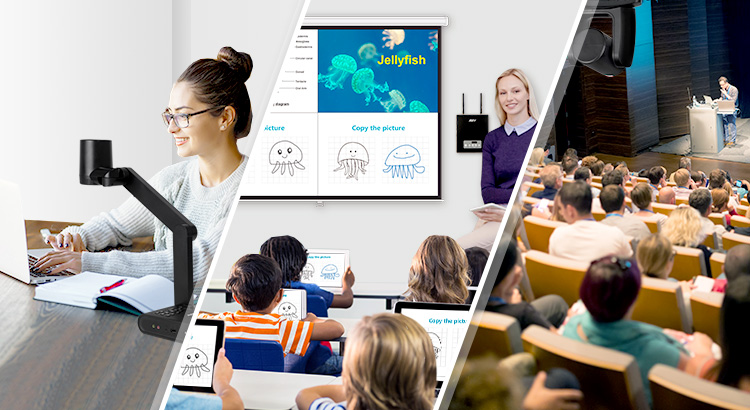When COVID-19 struck in late 2019 and early 2020, some schools’ lack of digital capability was exposed. Many of these schools were likely planning for slow digitization before the pandemic. Suddenly, their five-year plans were ramped up to five-day plans—and many administrations adapted admirably by accelerating digital transformation to reimagine education.
Administrators moved quickly to reconfigure everything from basic lesson plans to graduation ceremonies for online access. The contingency plans worked well enough in the short term, but what happens next? Should schools return to the traditional methods they relied on before the pandemic?
Experts say, "No way!"
Post COVID-19 Education Is Already Being Reimagined

Now that institutions that were on the fence about digitally transforming their curriculums and facilities have a little experience with technology solutions, they’ll be more likely to embrace them going forward. This assertion is backed up by an EdWeek Research Center study, which found that 87 percent of teachers feel they are better at using technology after going through the pandemic-forced changes to their teaching processes.
That means many teachers who were once passive about their education technology—simply using the few devices that the school forced upon them—will now actively seek more advanced solutions to help them teach, whether they’re doing so in hybrid classrooms or fully online.
Additionally, schools will be afraid of being caught off guard by unplanned disruptions again. This is especially true in the competitive, often profit-driven world of higher education. In an article for the World Economic Forum, Samuel Martin-Barbero points out that “we can now see that COVID-19 has redirected and amplified the concerns and actions of universities across the world, reshaping and challenging their interests into guaranteeing short-term operational continuity, while ensuring long-term institutional viability.”
Many experts and leaders are pushing for what a position paper by Microsoft has termed “reimagining education,” by developing “an agile, innovative and future focused hybrid deep learning system.” The authors of the paper posit that “this hybrid model must embrace digital to amplify, accelerate and connect learners and learning, while intentionally focusing on global competencies as well as academic standards.”
What Accelerating Digital Transformation Means for You

Even if there were no COVID-19 pandemic to shake things up, your school would have eventually had to transform or get out of the way. A blog post by the Digital Marketing Institute frames it like this:
“As the educational sector becomes more competitive, digital transformation is now becoming a necessary means of survival as this new digital world requires educators to adapt and adopt digital technologies, methodologies and mindsets.”
Digital transformation revolves around agility. It doesn’t mean you need to bulldoze your school building and move your entire operation to the cloud. It does mean that you should be able to do so at a moment’s notice, while also capitalizing on digital resources in traditional brick-and-mortar classrooms and homework assignments. And you’ll need to move quickly to stay relevant in the rapidly adapting education landscape.
To start, you’ll need to invest in technology solutions. For example, a good visualizer (document camera) is perfect for teaching from home (see this video) or enhancing classroom interaction, showing incredible details and capturing step-by-step processes. Interactive Control Boxes instantly upgrade outdated equipment, enabling wireless connection of student and teacher devices for collaboration and sharing. AI Auto Tracking Cameras let you livestream or record content for full-fledged online programs.
The best devices are easy to install and implement. They make accelerated digital transformation as simple as waiting for an order of devices to arrive, plugging them in, and getting started. Click below to find the technology you need to quickly digitize your curriculum.